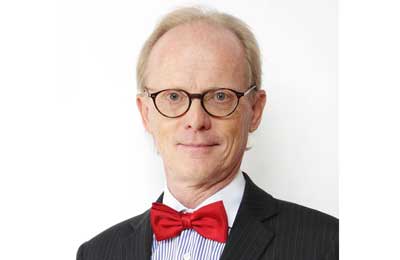
Lebanon job levels rise despite subdued economic activity
DUBAI, March 24, 2015
The employment level is rising in Lebanon despite subdued economic activity, according to the latest Crédit Agricole Private Banking research report, ‘Macro Comment – Lebanon Update.’
The February PMI index in Lebanon displayed one more below-50 mark, extending its contracting street to twentieth months, it said.
Most of the series fighter lay below the contraction/expansion frontier line and at 48.7, the case of contraction deteriorated further from the January level, said the report.
Dr Paul Wetterwald, chief economist, Crédit Agricole Private Banking, said: “There was a gain in Lebanon employment numbers in spite of lower PMI data resulting from declining new business and output levels. Such PMI levels also led to lower input prices and labour costs which finally resulted in declining prices charged by firms.”
The message conveyed by this index differs from the 2014 Banque du Liban GDP growth estimate (around two per cent) and 2015 IMF forecast (2.5 per cent).
“Furthermore, it can be noted that Lebanon is escaping the recession and capitalising on its currency’s peg to the US dollar. We can recall that the Banque du Liban (BDL) de jure exchange rate regime is free floating,” said Dr Wetterwald.
“De facto, the Lebanese pound rate of conversion to the US dollar remains within a very narrow band. In this context, we can name it an exchange rate stabilised arrangement, anchoring the pound to the dollar. It is generally known that despite daily interventions, the BDL does not publish intervention data,” he said.
“The capitalising on the Lebanese pound’s peg to the US dollar, the energy and food price components have contributed to lower the headline inflation rate during recent months. The latter has declined to -3.8% year-on-year in January, but it remains to be seen whether this will hold true over the year-end horizon.”
Assuming the oil price at the end of December this year to be the same than today, then the year-on-year variation expressed in USD will move from -50 per cent to -4 per cent, said the report.
In other words, oil will contribute positively to inflation in Lebanon at constant exchange rate, it said.
“Given the advantage stemming from the peg’s existence, namely adding a pinch of stability against a very uncertain outlook, one can’t help wonder whether that mechanism is at risk. First of all we have to note that Lebanon did not ask for assistance from the IMF to provide foreign currency during the recent crisis,” said Dr Wetterwald.
“Besides, it is true that the public debt outlook worsened significantly. However, the amount of public debt denominated in foreign currencies has stabilised since May 2013. Comparing the amount of currency reserves held by the central bank to ‘traditional’ metrics to gauge the robustness of the Lebanese position does not look worrying,” he said.
According to the Banque du Liban (BDL), ‘the public debt is expected to rise again in 2015 by about $4 billion. The debt-to-GDP ratio has risen from 130 per cent to about 143 per cent.’
“The Lebanese economy displayed some encouraging figures with gains in employment numbers, lower headline inflation and stable currency reserves. This is the positive side of the story but there are many challenges which are still confronting Lebanon. While there is a ray of positivity, economic indicators like PMI data is still low,” Dr Wetterwald added. - TradeArabia News Service







